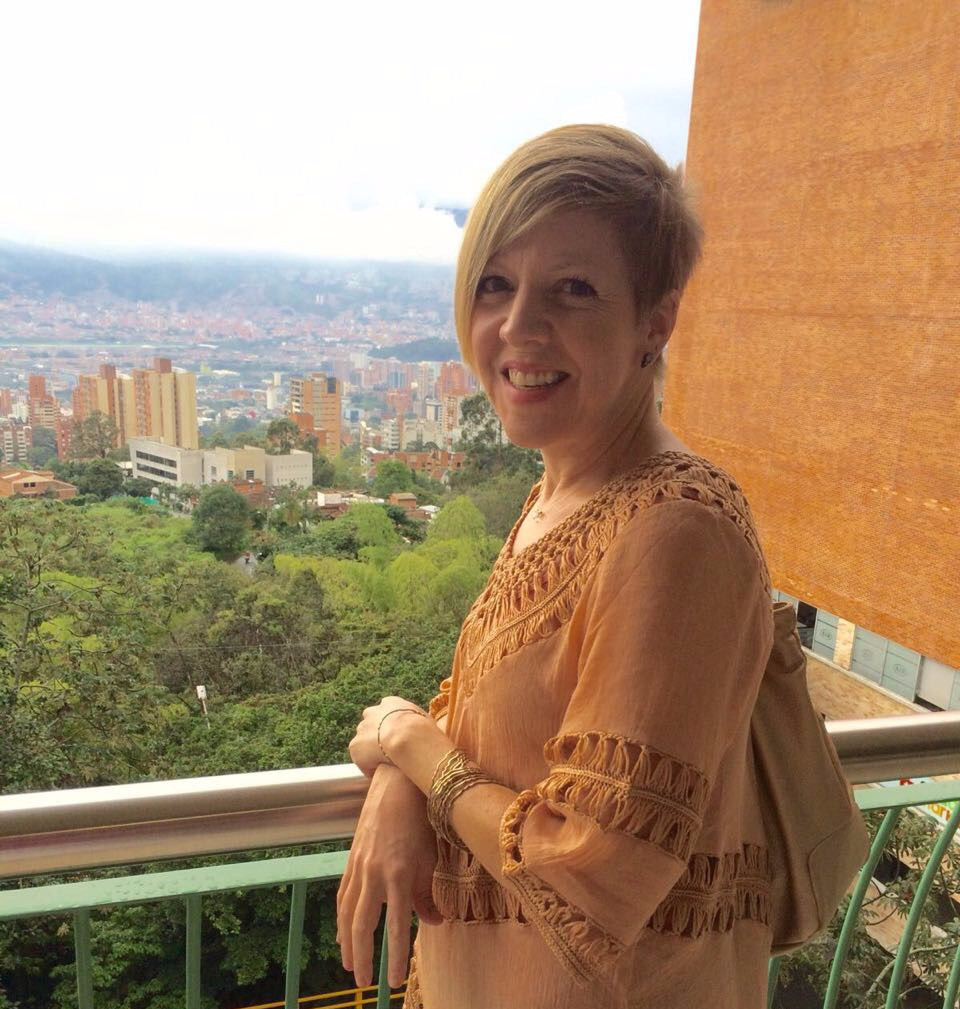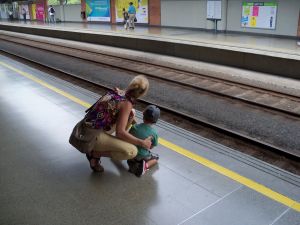It was Sunday morning, May 11, 2008. I remember the date because I’d had a big party at my small South Beach apartment the night before. It was a good party – we’d painted favorite quotes, song lyrics, and poems all over one of my walls – and therefore my apartment was a mess. I was still in my pajama shorts and T-shirt, a mop in one hand and phone in the other (because who can resist checking for new photos after you’ve hosted a party), when a call rang in.
This slideshow requires JavaScript.
The voice on the other end was My Luu, an old friend from college. We’d been in the same dorm and had known and liked each other, but at our 5th or 10th reunion (it’s amazing how they blur together) we connected anew over dancing and late-night pizza. Now My was in Miami via Argentina, on her way back from a trip for IBM, for which she was then a market development executive helping women worldwide gain access to affordable technology to start and sustain businesses. She had messaged me the night before, but I hadn’t seen it until after midnight. Though she was in the 305 for only 15 hours or so, I replied with my phone number in case she still had time to get together.
By the time we spoke, only a few hours remained. Before heading back to the airport, My explained, she needed to fit in a three-hour training run for an upcoming marathon. It took me a minute to wrap my head around this – spending a long layover on a three-hour run was not something that would naturally occur to me, especially when lying on the beach with a tourist drink in hand was a viable option. But knowing My, it made sense – this was not a woman who wasted any part of any day. If circumstances changed, she adjusted and continued forward.
“Where are you?” I asked. “I can’t run for three hours, but I could join you for one.” I crossed my metaphorical fingers that I’d be able to pull that off: I was mildly hung over and definitely sleep-deprived, and wasn’t sure I could keep up.
“I’m at the apartment of the only other person I know in Miami,” she said. Someone she’d worked with during her time as a State Department diplomat in Uzbekistan, I think. “On the Beach, around 16th and Euclid.”
“Wait, what? Where exactly?”
When she gave me the address, I couldn’t believe it. My was in the small apartment building just behind mine. I could step out my entryway door and see the place not even 50 yards away. Within 15 minutes, we met on the corner. My greeted me with her customary big hug, and we started jogging. Fueled by the company and conversation, I surprised myself by running more than an hour. During that time, I learned that My’s upcoming marathon – in Rio, I think – would not be her first. She already had some races under her belt and was planning to run a marathon on every continent. This was someone who knew what she was doing.
At one point during the run, My suggested we circle back to her friend’s to refill water bottles and grab a Gatorade. For some reason, the simple act of stopping briefly to fulfill a need was an epiphany for me: The best way to reach the finish line was to focus on the journey. There was a patience, flexibility and matter-of-fact practicality to My’s training that I had not understood until then. I had tried training for a marathon once before and had treated the process with such intransigent rigor that making a pit stop would have been anathema. I thought if you stopped, even to adjust to new conditions, you had failed. Not surprisingly, during my first 13-miler, I injured myself and never went further. But with My, I saw how running 26.2 was not only possible but might even be enjoyable. It was all about attitude.
I mentioned to My that I had tried and failed, and tentatively suggested that maybe I would try again. She bubbled with enthusiasm, “You can totally do it, Courtenay!” she said. “You can do it! You have to do it.”
I headed back to my still-icky apartment, leaving My to finish her three hours. But new possibilities and a new optimism had bloomed in my head. I started running more consistently, following My’s example of pacing, focusing on the present and listening to the body’s signals, and by the next January, I had done it – I had run my first marathon. It’s an accomplishment I credit to two people: my mom, who set an example for me by running her first marathon at 41, and My, who in just over an hour showed me the proper way to train and, most critically for me, the necessary mindset. I wouldn’t have done it without her.
My’s contagious enthusiasm was a gift that kept on giving. In April 2009, My emailed me with the idea of getting a bunch of Yalies together to run a race. She had the backing of the Association of Yale Alumni and had set her sights on a marathon in Reykjavik, Iceland in August of that year. She wanted to know if I’d like to go. On my nonprofit salary, and with my Miami Beach apartment, Iceland would be a stretch, but I knew I would do it. My also helped by agreeing to room with me for the whole trip, reducing costs. The days we spent in Iceland proved to be one of the most fun and enriching travel experiences I’ve ever had. The marathon itself was only one highlight, and all of it was thanks to My and her joyful energy, diligent planning and ability to make meaningful connections among everyone around her.
I ran two more marathons after that, including one in Argentina, bringing my total to four and number of continents to three. Each of them was an experience unto itself, and each a credit to my friend. She opened worlds for me. Through marathon running, travel and her own life example, My taught me a new way of being – a way that said yes to life. Yes even when it’s difficult. Yes when you’re not sure you can do it. Yes even if you might not be strong enough. Yes even when you want to quit. Yes when you don’t know what lies around that curve. Yes because deep in your heart you know the journey will be worth it, regardless of the outcome. Yes because it’s the only way to truly live. Yes.
My, I’ve never been able to embrace the yes quite as much as you, but because of you, I sure try hard. And never, ever have I regretted it. My life is so much richer because of you. Run in peace, My. Run in love. Run.
 In loving memory. On Friday, September 25, 2015, My lost her hard-fought battle with cancer, but her light was not extinguished – it lives on in all of us blessed to have known her, and in all the people around the world who have benefited and continue to benefit from her work. May My’s husband Dave and her family and friends be surrounded by love during this transition. For more on My’s story, see The New York Times write-up of her August 7, 2015 wedding.
In loving memory. On Friday, September 25, 2015, My lost her hard-fought battle with cancer, but her light was not extinguished – it lives on in all of us blessed to have known her, and in all the people around the world who have benefited and continue to benefit from her work. May My’s husband Dave and her family and friends be surrounded by love during this transition. For more on My’s story, see The New York Times write-up of her August 7, 2015 wedding.


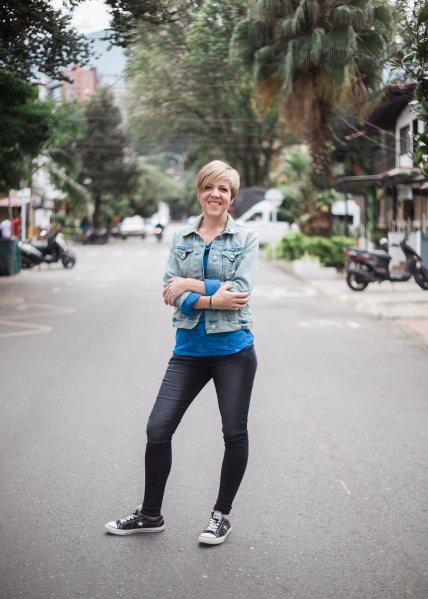


 Sometimes it seems horses and motos frequent the Autopista Medellín-Bogotá nearly as often as the trucks for which it’s intended. As the two-lane passes through Antioquia, the Colombian state dominated by Medellín, it yields views of waterfalls and easy access to charcos, or natural swimming holes.
Sometimes it seems horses and motos frequent the Autopista Medellín-Bogotá nearly as often as the trucks for which it’s intended. As the two-lane passes through Antioquia, the Colombian state dominated by Medellín, it yields views of waterfalls and easy access to charcos, or natural swimming holes. Past the Santuario toll (always much further past than the locals say), not far from Cocorná, lies the Hotel-Restaurante El Descanso. In the US, it would be only a truck stop – oil leaches slowly from the undercarriage of parked semi nearby – but here the adjacent charco makes it something more.
Past the Santuario toll (always much further past than the locals say), not far from Cocorná, lies the Hotel-Restaurante El Descanso. In the US, it would be only a truck stop – oil leaches slowly from the undercarriage of parked semi nearby – but here the adjacent charco makes it something more. On weekends, locals gather to drink and chat by the quebrada’s banks and take dips in the icy cold waters. In the shallows, children splash and squeal; young men teach the newbies to skip stones. A very old man, unable to walk, lies on a grassy spot, wrapped in blankets and attended to by his wife.
On weekends, locals gather to drink and chat by the quebrada’s banks and take dips in the icy cold waters. In the shallows, children splash and squeal; young men teach the newbies to skip stones. A very old man, unable to walk, lies on a grassy spot, wrapped in blankets and attended to by his wife.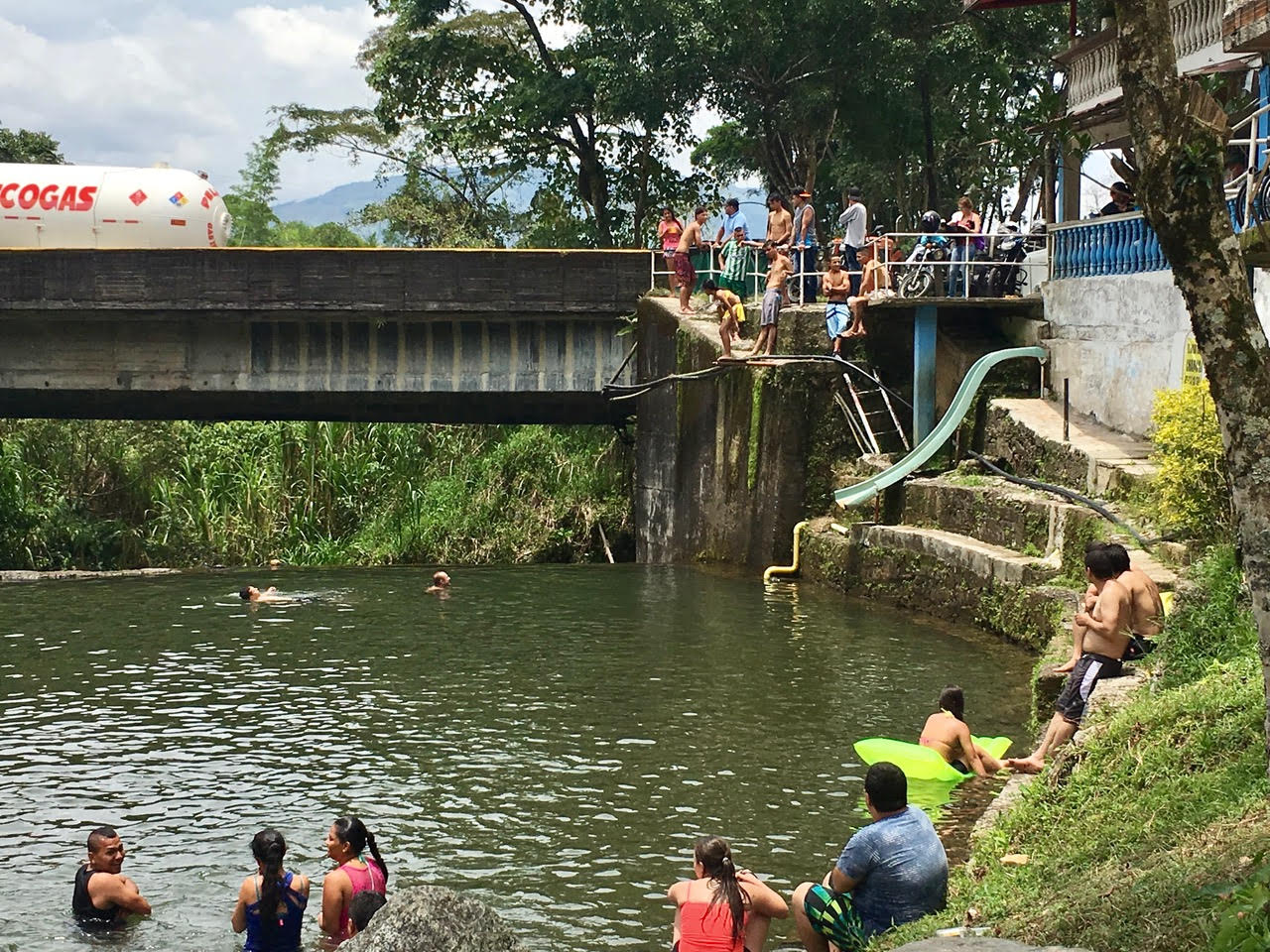 Young people congregate around the deep end and on the balcony of the tiendita above. A cracked pool slide remains installed in the concrete embankment. On the makeshift diving platform, a girl readies herself to leap as a tanker truck roars by. She backs away as those below yell encouragement.
Young people congregate around the deep end and on the balcony of the tiendita above. A cracked pool slide remains installed in the concrete embankment. On the makeshift diving platform, a girl readies herself to leap as a tanker truck roars by. She backs away as those below yell encouragement.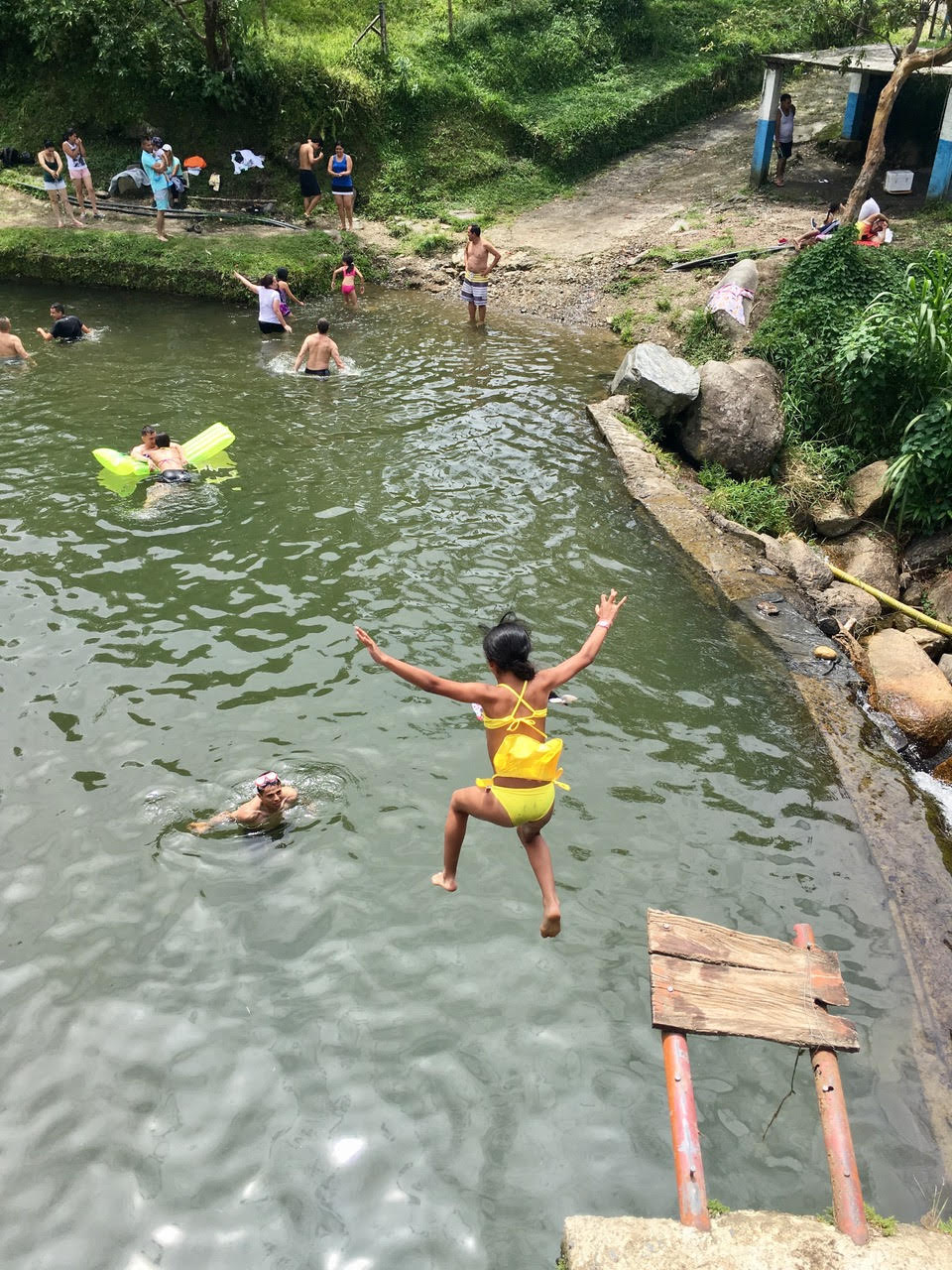 After several minutes of indecision, the girl is airborne. She doesn’t dive head first to meet her reflection, as some of the adult males have done, but she’s the youngest to make the attempt today. Those watching break into smiles as she surfaces.
After several minutes of indecision, the girl is airborne. She doesn’t dive head first to meet her reflection, as some of the adult males have done, but she’s the youngest to make the attempt today. Those watching break into smiles as she surfaces.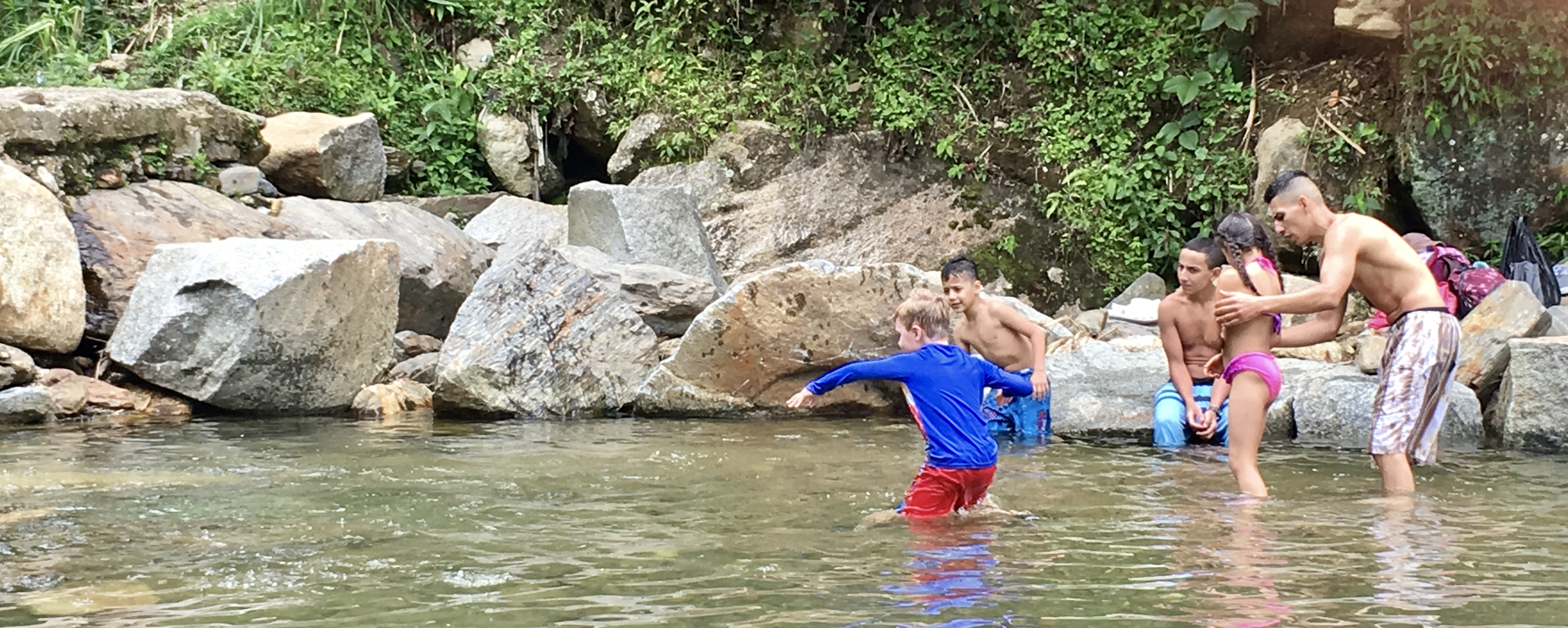 Learning to skip stones.
Learning to skip stones.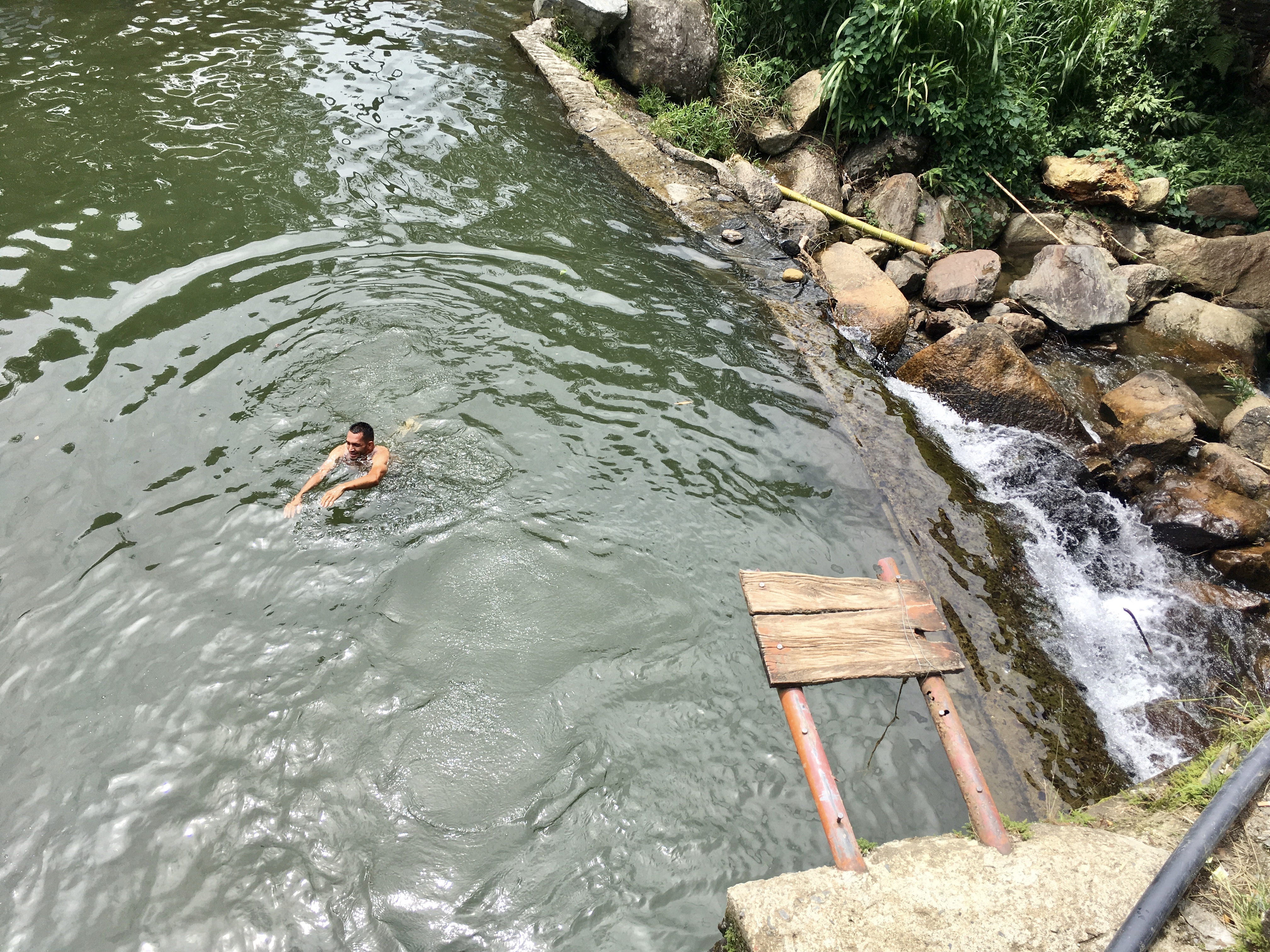 The diving platform.
The diving platform. And he’s off!
And he’s off!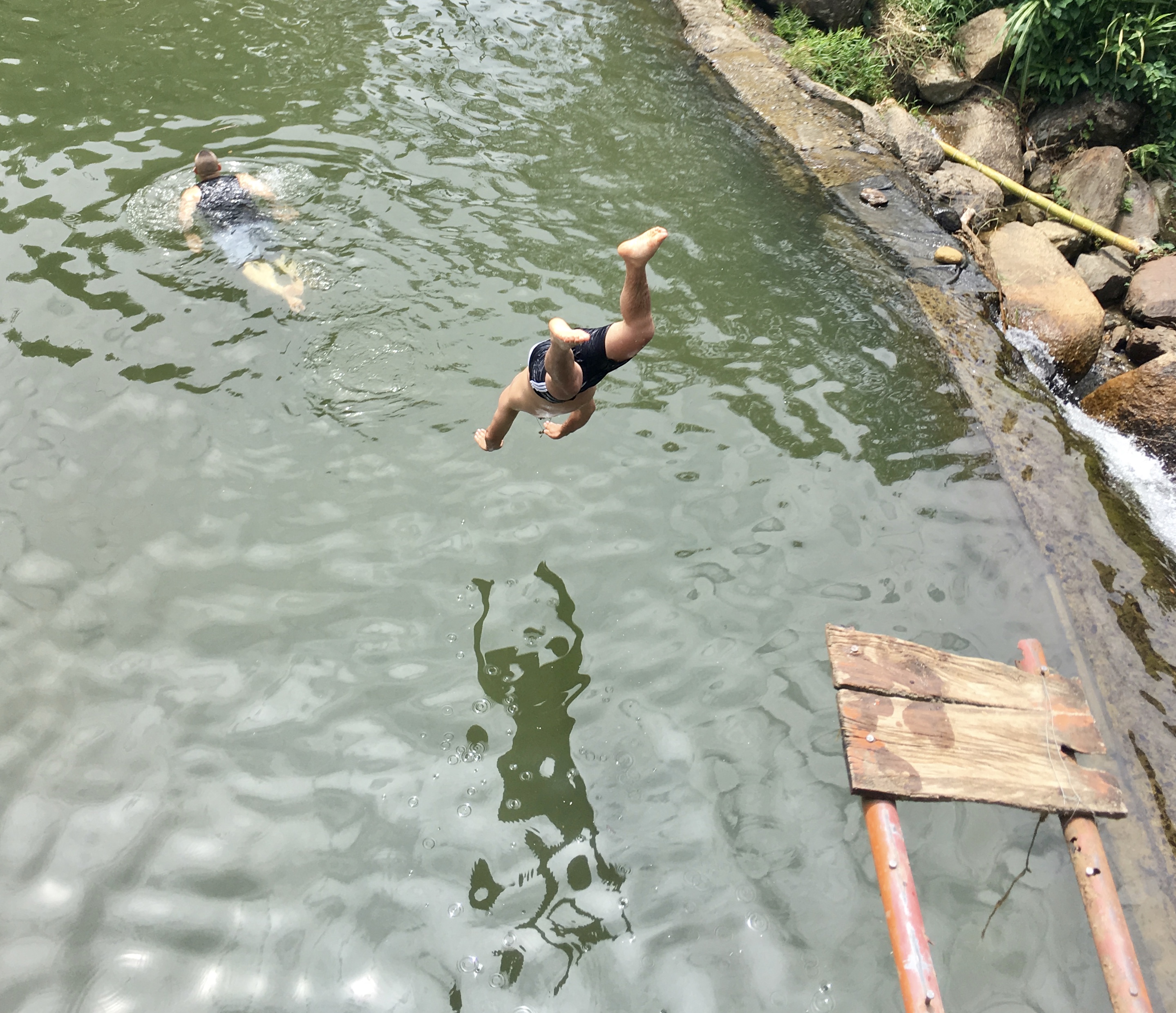 Man meets himself.
Man meets himself.
